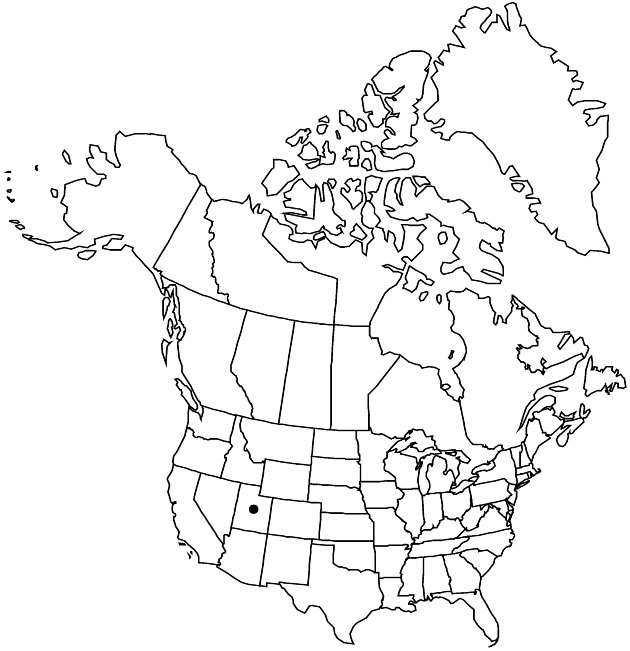Difference between revisions of "Ericameria crispa"
Phytologia 68: 152. 1990.
FNA>Volume Importer |
imported>Volume Importer |
||
| (6 intermediate revisions by 2 users not shown) | |||
| Line 8: | Line 8: | ||
}} | }} | ||
|common_names=Crisped goldenbush | |common_names=Crisped goldenbush | ||
| − | |basionyms={{Treatment/ID/ | + | |special_status={{Treatment/ID/Special_status |
| + | |code=E | ||
| + | |label=Endemic | ||
| + | }}{{Treatment/ID/Special_status | ||
| + | |code=C | ||
| + | |label=Conservation concern | ||
| + | }} | ||
| + | |basionyms={{Treatment/ID/Basionym | ||
|name=Haplopappus crispus | |name=Haplopappus crispus | ||
|authority=L. C. Anderson | |authority=L. C. Anderson | ||
| + | |rank=species | ||
| + | |publication_title=Great Basin Naturalist | ||
| + | |publication_place=43: 359, fig. 1. 1983 | ||
}} | }} | ||
|synonyms= | |synonyms= | ||
| Line 36: | Line 46: | ||
-->{{#Taxon: | -->{{#Taxon: | ||
name=Ericameria crispa | name=Ericameria crispa | ||
| − | |||
|authority=(L. C. Anderson) G. L. Neson | |authority=(L. C. Anderson) G. L. Neson | ||
|rank=species | |rank=species | ||
| Line 50: | Line 59: | ||
|publication title=Phytologia | |publication title=Phytologia | ||
|publication year=1990 | |publication year=1990 | ||
| − | |special status= | + | |special status=Endemic;Conservation concern |
| − | |source xml=https:// | + | |source xml=https://bitbucket.org/aafc-mbb/fna-data-curation/src/2e0870ddd59836b60bcf96646a41e87ea5a5943a/coarse_grained_fna_xml/V19-20-21/V20_85.xml |
|tribe=Asteraceae tribe Astereae | |tribe=Asteraceae tribe Astereae | ||
|genus=Ericameria | |genus=Ericameria | ||
Latest revision as of 20:06, 5 November 2020
Plants 20–40 cm. Stems erect, green when young, much branched, short-stipitate-glandular. Leaves erect to ascending; blades oblanceolate to spatulate, 15–30 × 3–8 mm, midnerves and 2 smaller collateral veins evident, (margins crisped) apices acute, often apiculate, faces short-stipitate-glandular, resinous. Heads usually in loose, paniculiform or congested, cymiform arrays, sometimes borne singly. Peduncles 5–40 mm (bracts 0–3, reduced, leaflike). Involucres campanulate, 12.5–15 × 5–9 mm. Phyllaries 24–35 in 3–4 series, green to tan, ovate or lanceolate to elliptic, 8–12 × 1–2.5 mm, subequal, outer herbaceous to chartaceous, inner mostly chartaceous, midnerves slightly raised, evident entire length of bodies, (margins ciliate) apices acute to acuminate or cuspidate (outer), appendages slender (outer), abaxial faces glabrous. Ray florets 0. Disc florets 14–24; corollas 9.5–10.8 mm. Cypselae tan to reddish, elliptic, 6.5–8.5 mm, sparsely, evenly strigose; pappi usually off-white to brown, sometimes reddish, 8–9.5 mm. 2n = 18.
Phenology: Flowering late summer–fall.
Habitat: On open slopes of weathered soils, with manzanita, fir, pine
Elevation: 2400–3100 m
Discussion
Of conservation concern.
Selected References
None.
